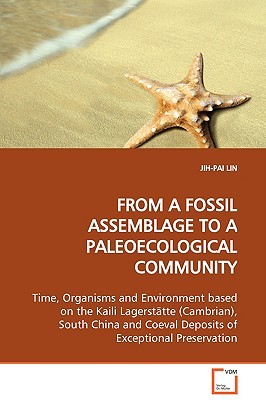
- We will send in 10–14 business days.
- Author: Jih-Pai Lin
- Publisher: VDM Verlag
- ISBN-10: 3639101081
- ISBN-13: 9783639101089
- Format: 15.2 x 22.9 x 2.2 cm, softcover
- Language: English
- SAVE -10% with code: EXTRA
FROM A FOSSIL ASSEMBLAGE TO A PALEOECOLOGICAL COMMUNITY Time, Organisms and Environment based on the Kaili Lagerstätte (Cambrian), South China and Coeval Deposits of Exceptional Preservation (e-book) (used book) | bookbook.eu
Reviews
Description
The Cambrian Period (542 to 488 Ma) marks the beginning of an abundant fossil record, and the Burgess Shale Biota was the first fully described fossil assemblage that contains a relatively complete picture of a benthic Cambrian community. More Burgess Shale-type (BST) fossil assemblages have been discovered since then and are ready to be utilized to test hypotheses about the ecology of the Cambrian explosion, which is the most important event in the evolution of metazoans. This book focuses on the Kaili Biota (http: //hdl.handle.net/1811/24227), an important deposit bridging the stratigraphic gap between Chengjiang Biota and Burgess Shale Biota. It allows us to gain a more complete understanding of the Cambrian life through the window of BST deposits. The book is divided into four parts. Part 1 includes stratigraphic background of Kaili Formation. Part 2 contains discussions on taphonomy. Part 3 provides new observation for Cambrian paleoecology, including animal-substrate relations, spawning habits, teiring community, and faunal succession. Part 4 presents hypotheses on arthropod, echinoderm evolution, and the evolution of biosphere.
EXTRA 10 % discount with code: EXTRA
The promotion ends in 19d.13:53:08
The discount code is valid when purchasing from 10 €. Discounts do not stack.
- Author: Jih-Pai Lin
- Publisher: VDM Verlag
- ISBN-10: 3639101081
- ISBN-13: 9783639101089
- Format: 15.2 x 22.9 x 2.2 cm, softcover
- Language: English English
The Cambrian Period (542 to 488 Ma) marks the beginning of an abundant fossil record, and the Burgess Shale Biota was the first fully described fossil assemblage that contains a relatively complete picture of a benthic Cambrian community. More Burgess Shale-type (BST) fossil assemblages have been discovered since then and are ready to be utilized to test hypotheses about the ecology of the Cambrian explosion, which is the most important event in the evolution of metazoans. This book focuses on the Kaili Biota (http: //hdl.handle.net/1811/24227), an important deposit bridging the stratigraphic gap between Chengjiang Biota and Burgess Shale Biota. It allows us to gain a more complete understanding of the Cambrian life through the window of BST deposits. The book is divided into four parts. Part 1 includes stratigraphic background of Kaili Formation. Part 2 contains discussions on taphonomy. Part 3 provides new observation for Cambrian paleoecology, including animal-substrate relations, spawning habits, teiring community, and faunal succession. Part 4 presents hypotheses on arthropod, echinoderm evolution, and the evolution of biosphere.


Reviews